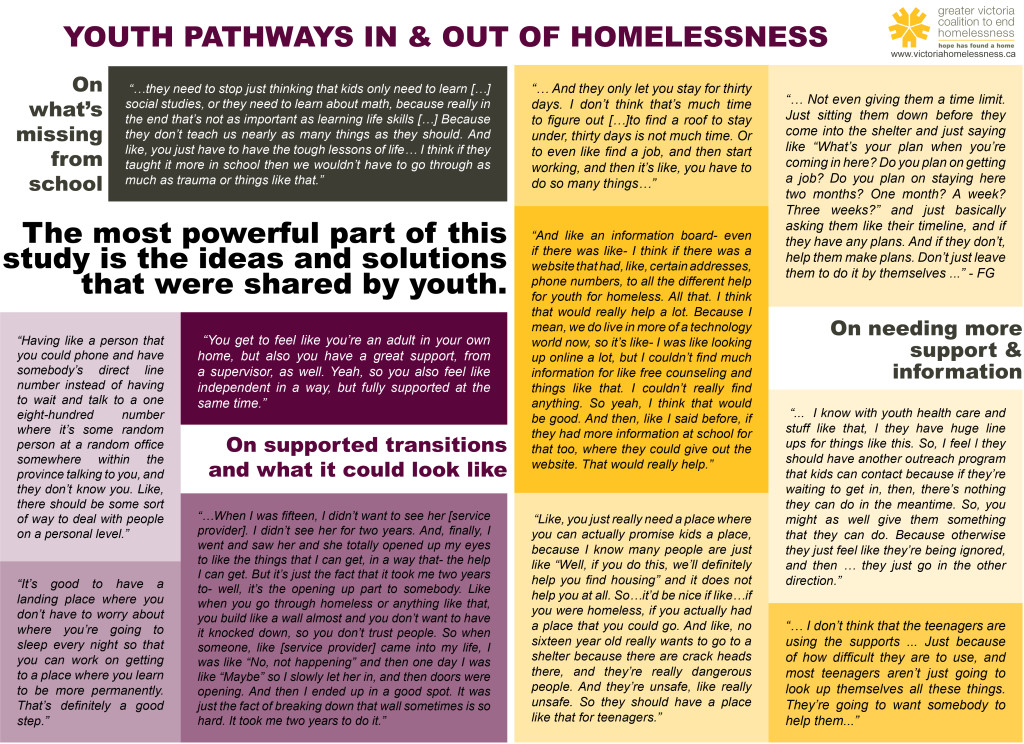 We recently published a study of youths experiencing homelessness in Greater Victoria. We were looking for confirmation of some of the core drivers of homelessness, and potential pathways out of it.
We recently published a study of youths experiencing homelessness in Greater Victoria. We were looking for confirmation of some of the core drivers of homelessness, and potential pathways out of it.
The core drivers were no real surprise to us. They include the broader structural issues like insufficient income assistance, poor job prospects and a lack of affordable housing. They include systemic issues like aging out of care, and a poor transition between adult and youth services. Finally, they include personal issues like family breakdown, abuse, and substance use. These are three broad categories that we were already familiar with.
What was truly interesting were some of the potential solutions raised by the youth themselves. Some of the best solutions they raised were ones that were specific and achievable as opposed to broad and difficult to pin down.
For example, youth identified that when they first experience homelessness it is challenging to discover what help is available or where to go. They recommended some place central that has that information like an online bulletin board or other web based solution. Another example was the reinstitution of a mobile outreach service. The previous service, called the Y Van was phased out in 2011 and many youth spoke either of the challenges of trying to access services where they were or of how they wanted to avoid the adult oriented services in the downtown core.
Perhaps the most poignant issue raised was the loss of trusted mentors or service workers when they transition from youth to adult care. Youth experiencing homelessness are in a very scary place and often have difficulty building trust with adults. It was heartbreaking to hear how they would finally open up and begin to build a relationship with a youth service worker – only to be forced to leave that relationship behind and start again when they transitioned to adult services.
Some of these solutions are easy and some are not. But what is key is that they came from the place where youth experiencing homelessness are and we would serve them well to listen to what we have learned – and act on it.
Learn more about our report here: Youth Pathways

